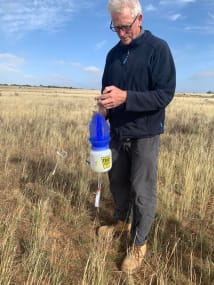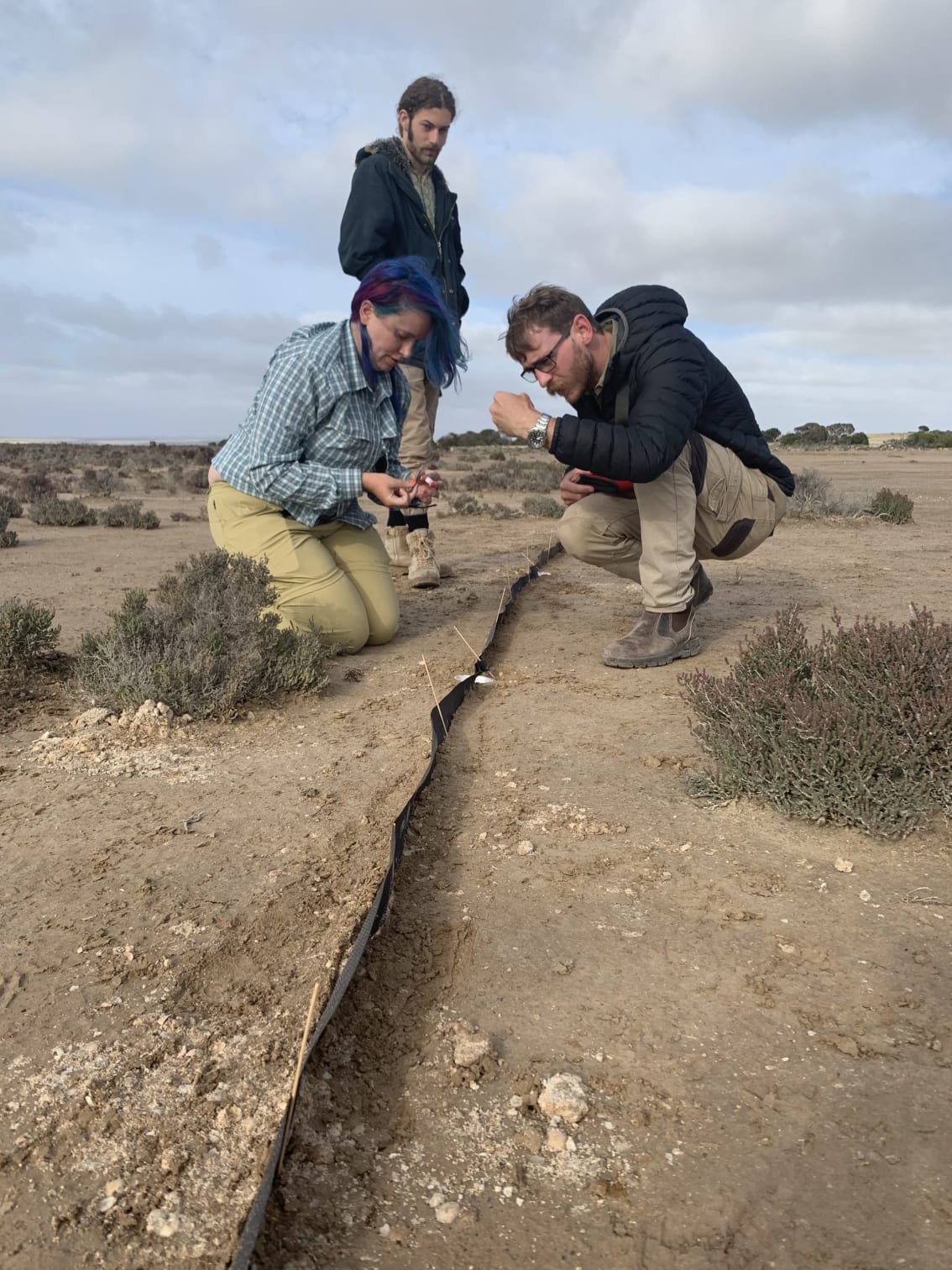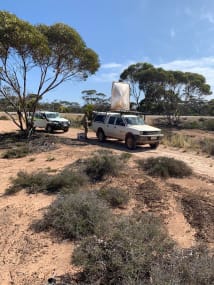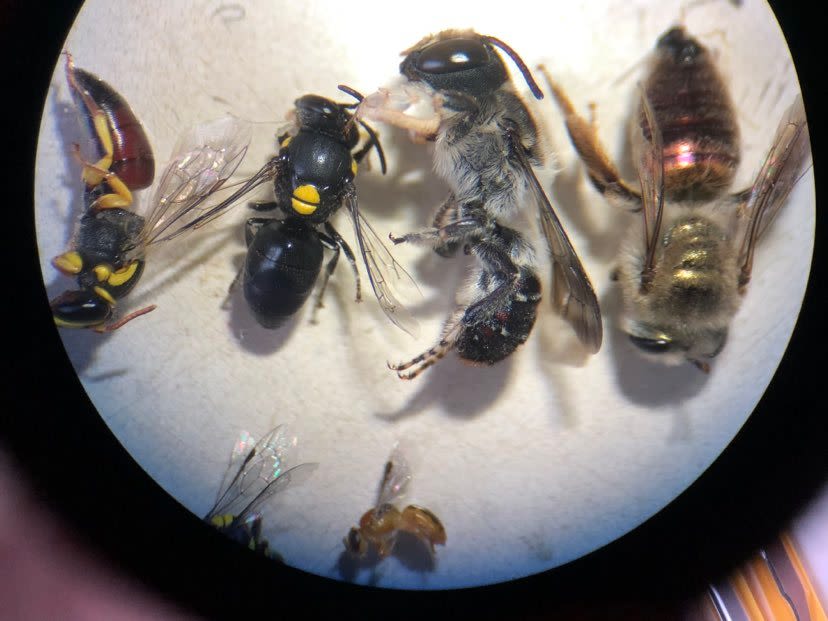Day 2
Today I set out with a team of entomologists (they study invertebrates). First stop was at a wide open grassy plains where we checked a pitfall trap, a malaise trap and blue vein trap. At the pitfall we found some carabidae megacephala which means a ground beetle with a big head! The Blue vane trap worked a treat for catching many native bees – they are attracted to the blue vanes thinking they are flowers. The malaise however was not so successful - it was apparently not in the correct location.


Next stop was in the Yalata area where a large net was erected on top of the car to catch invertebrates as we drove along – it resembled something from the movie Priscilla – so its new nick name became the Priscilla net! The rest of the day was spent using hand held insect nets at a number of different locations. The entomologists taught us how to wave the net correctly to catch many specimens without letting them fly out. It was fantastic to see so many different species of wasps and native bees around many types of flowering plants. The highlight was finding a rare ‘ghost wasp’ that hijacks the nest of native bees to lay its egg with a very long ‘ovipositor’. Their young then eat the bee larvae to grow! Another highlight was to see a hatchet wasp drag a paralysed cockroach down into its burrow!


QUESTION FOR THE DAY: Why does the hatchet wasp parasitize the cockroach and what does it do with it when it gets it into its burrow?!